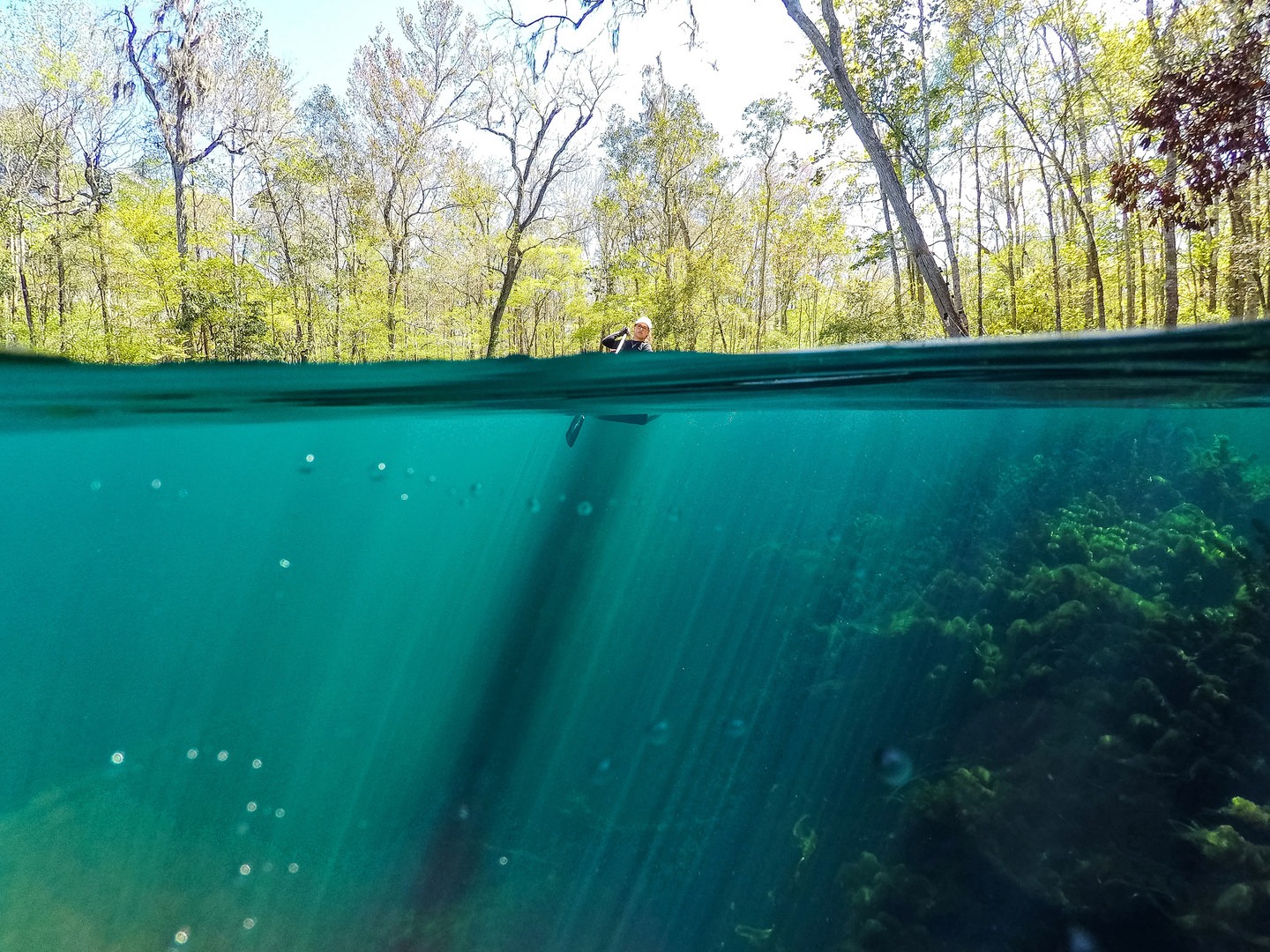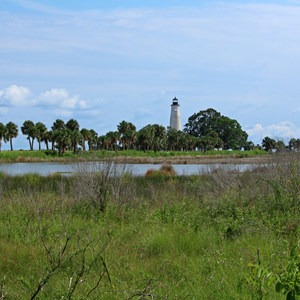You are here
The Wacissa River is located in Northern Florida, near Tallahassee, and is fed by 12 limestone springs just south of the town of Wacissa, and it cuts through Aucillia Wildlife Management Area. The river has been designated a State Paddling Trail, and it offers a great setting to canoe or kayak while observing abundant wildlife and going for a swim in the Big Blue Spring, a favorite swimming hole.
Overall this is an easy 5-mile round-trip paddle. You can choose to do just a fraction of that and enjoy beautiful vegetation, wildlife, and crystal clear springs, or you can continue south and get to the Aucillia River several miles downstream. You can bring your own canoe or kayak and use the public boat ramp at the Wacissa Spring, or you can rent one at the nearby shop, which offers access to the water by Horsehead Spring.
Starting from the shop, the first half mile winds through a narrow path and passes some private cabins. At Wacissa Spring, which is a good swimming hole, the river widens substantially. Just a half mile downstream is Cassidy Spring on the right side of the river, which is a great spot to stop for a picnic. Another third of a mile downstream is a favorite swimming hole on the left known as Big Blue Spring. The name is quite appropriate, as its clear, turquoise water filters sunrays, offering great views from the surface and underwater as well. There is a swing tied to a large tree on the edge of the river from which it is possible to plunge into the water.
Wildlife is abundant, including alligators and turtles, which can be seen throughout the river. Less often seen are river otters and water snakes. Birds are numerous as well, including ospreys, eagles, hawks, owls, herons, egrets, ibis, anhingas, ducks and other wading birds. Vegetation is also impressive both on land (including cypress, oak, maple and pine, among others) and in the water. Take a look under the surface to explore the underwater ecosystem. Although it isn't obvious from the landscape, humans have been present on the river and in the area for thousands of years. In the 18th century, for instance, the river was used to transport cotton from the plantations in the area.








Comments
Sign In and share them.